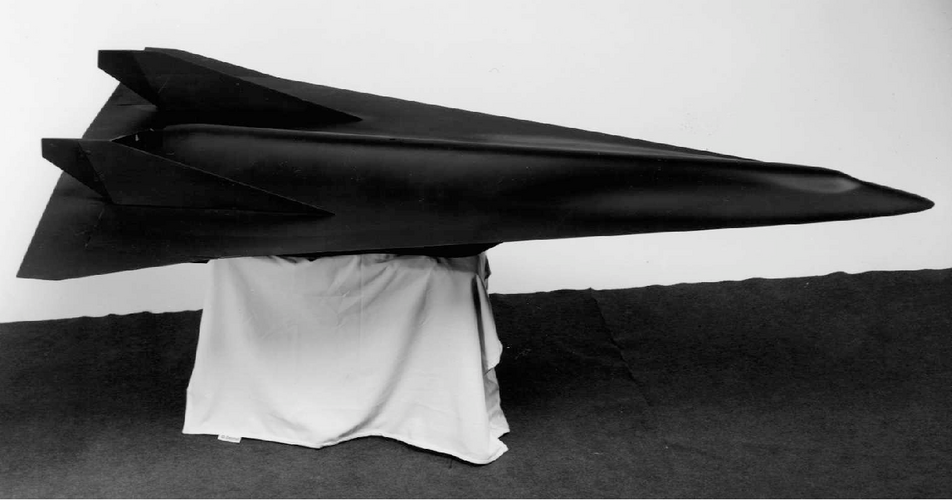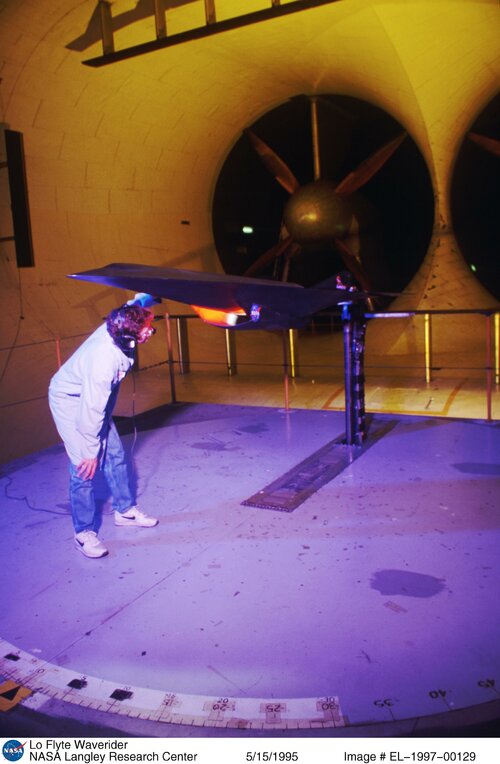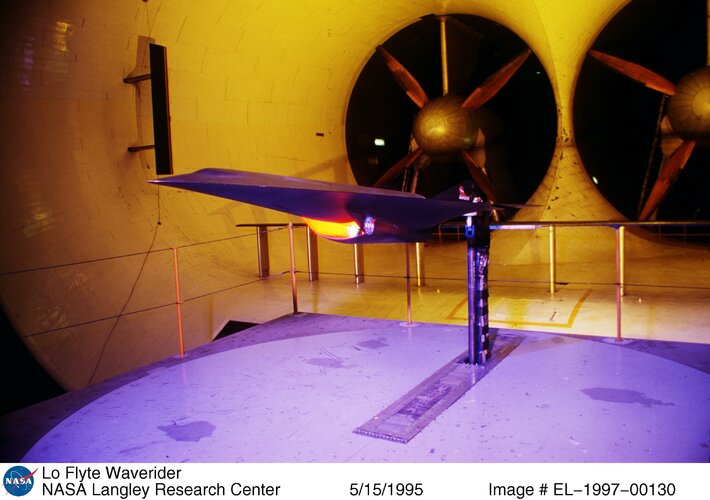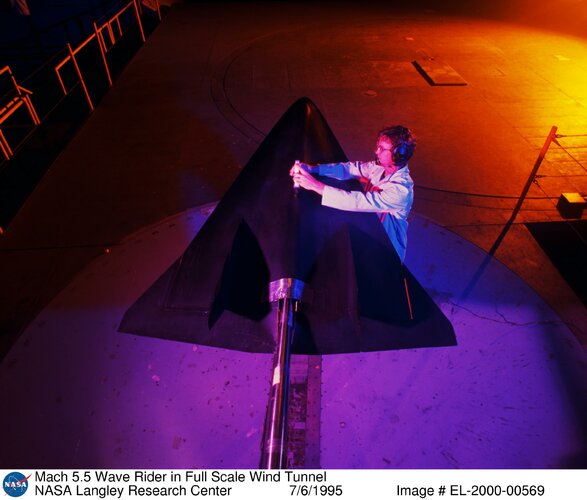You are using an out of date browser. It may not display this or other websites correctly.
You should upgrade or use an alternative browser.
You should upgrade or use an alternative browser.
NASA/AFRL LoFLYTE™ (Low Observable Flight Test Experiment) program
- Thread starter hesham
- Start date
Matej
Multiuniversal creator
Re: Loflyte,spacecraft or not ?
It was subsonic demonstrator of waverider high-speed vehicle. Three of them were build by Accurate Automation. First flight in December 1996, test program took place two years. Powered by one SWB Turbines SWB-3.
It was subsonic demonstrator of waverider high-speed vehicle. Three of them were build by Accurate Automation. First flight in December 1996, test program took place two years. Powered by one SWB Turbines SWB-3.
Attachments
- Joined
- 1 April 2006
- Messages
- 11,374
- Reaction score
- 10,200
Last edited:
XP67_Moonbat
ACCESS: Top Secret
- Joined
- 16 January 2008
- Messages
- 2,271
- Reaction score
- 541
Re: Loflyte,spacecraft or not ?
Hesh!
I got ya right here, buddy! Enjoy!
http://www.designation-systems.net/dusrm/app4/loflyte.html
Hesh!
I got ya right here, buddy! Enjoy!
http://www.designation-systems.net/dusrm/app4/loflyte.html
airrocket
Dreams To Reality
Re: Loflyte,spacecraft or not ?
One of the engineers\consultants was an X D-21 project engineer. Loflyte was a NASA SBIR small business program for joint Langley\AFRL research. These SBIR programs we're a great way for small business to advance technology and gain some capital in the process. To bad the hypersonic's are no longer in demand. Since Constellation program NASA SBIR's are now deep space exploration related.
One of the engineers\consultants was an X D-21 project engineer. Loflyte was a NASA SBIR small business program for joint Langley\AFRL research. These SBIR programs we're a great way for small business to advance technology and gain some capital in the process. To bad the hypersonic's are no longer in demand. Since Constellation program NASA SBIR's are now deep space exploration related.
- Joined
- 1 April 2006
- Messages
- 11,374
- Reaction score
- 10,200
Re: Loflyte,spacecraft or not ?

 crgis.ndc.nasa.gov
crgis.ndc.nasa.gov
[link is dead, original photos restored as attachments]

NACA/NASA Langley: Celebrating 100 Years
NASA.gov brings you the latest images, videos and news from America's space agency. Get the latest updates on NASA missions, watch NASA TV live, and learn about our quest to reveal the unknown and benefit all humankind.
[link is dead, original photos restored as attachments]
Attachments
Last edited:
- Joined
- 1 April 2006
- Messages
- 11,374
- Reaction score
- 10,200
Research Technology
2001-03-01
Engineers at the Marshall Space Flight Center (MSFC) have been testing Magnetic Launch Assist Systems, formerly known as Magnetic Levitation (MagLev) technologies. To launch spacecraft into orbit, a Magnetic Launch Assist system would use magnetic fields to levitate and accelerate a vehicle along a track at a very high speed. Similar to high-speed trains and roller coasters that use high-strength magnets to lift and propel a vehicle a couple of inches above a guideway, the launch-assist system would electromagnetically drive a space vehicle along the track. A full-scale, operational track would be about 1.5-miles long and capable of accelerating a vehicle to 600 mph in 9.5 seconds. This photograph shows a subscale model of an airplane running on the experimental track at MSFC during the demonstration test. This track is an advanced linear induction motor. Induction motors are common in fans, power drills, and sewing machines. Instead of spinning in a circular motion to turn a shaft or gears, a linear induction motor produces thrust in a straight line. Mounted on concrete pedestals, the track is 100-feet long, about 2-feet wide, and about 1.5- feet high. The major advantages of launch assist for NASA launch vehicles is that it reduces the weight of the take-off, the landing gear, the wing size, and less propellant resulting in significant cost savings. The US Navy and the British MOD (Ministry of Defense) are planning to use magnetic launch assist for their next generation aircraft carriers as the aircraft launch system. The US Army is considering using this technology for launching target drones for anti-aircraft training.Attachments
- Joined
- 6 August 2007
- Messages
- 3,885
- Reaction score
- 5,908
- Joined
- 6 August 2007
- Messages
- 3,885
- Reaction score
- 5,908
Re: Loflyte,spacecraft or not ?
Looks damn close to GD INCAAPS hypersonic cruise vehicle study.
Not a coincidence
- Joined
- 19 December 2011
- Messages
- 224
- Reaction score
- 439
Sometime back in the 1990s, NASA Dryden Flight Research Center hosted an "open house" event that included a number of airplanes on static display in the hangar. The tiny Lo-Flyte vehicle was there right alongside full-size planes such as the F-104 and F-18. Beside each airplane there was a person standing ready to answer questions. Someone evidently had a sense of humor. The gentleman standing beside Lo-Flyte was a midget.
Similar threads
-
-
-
-
-
Sikorsky Long-Range Hybrid-Electric VTOL Demonstrator (HEX)
- Started by VTOLicious
- Replies: 5

















